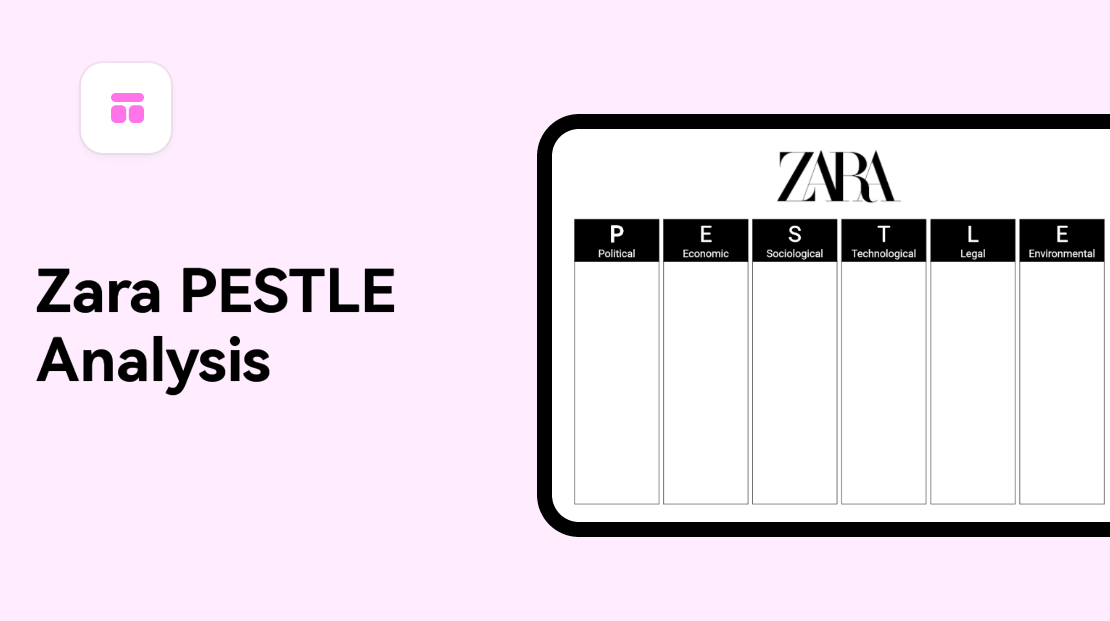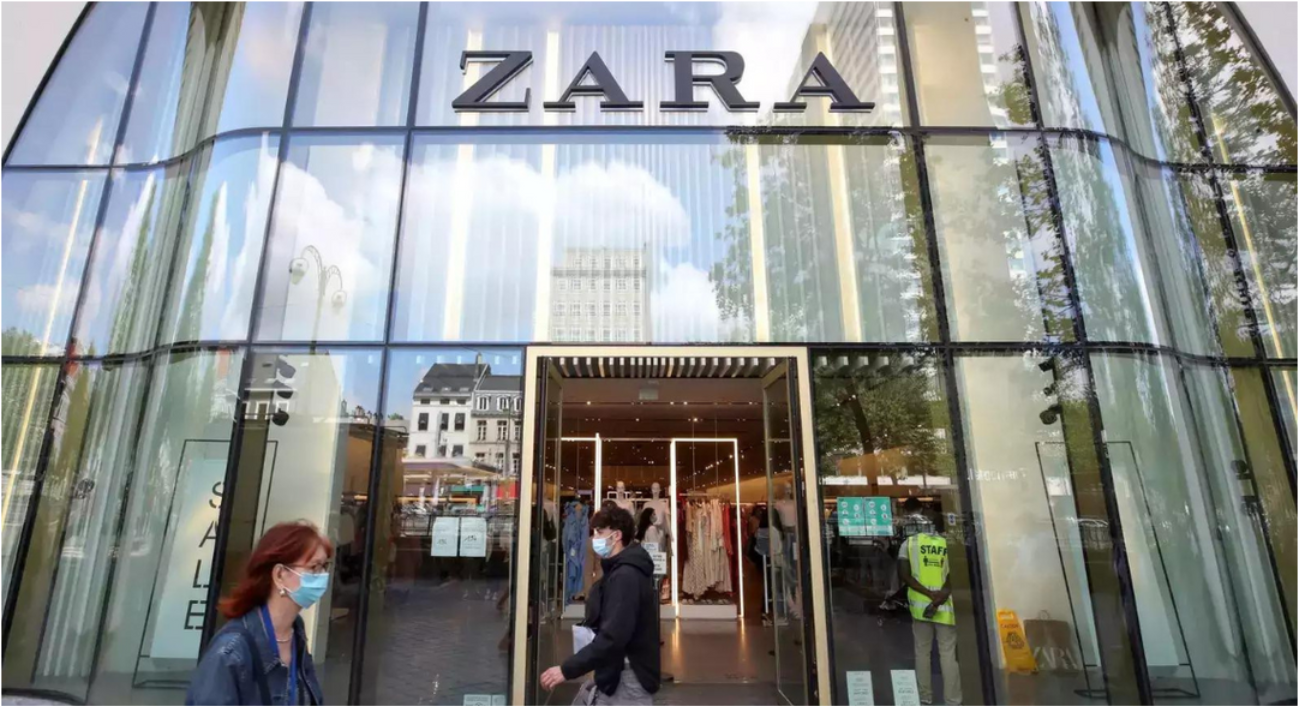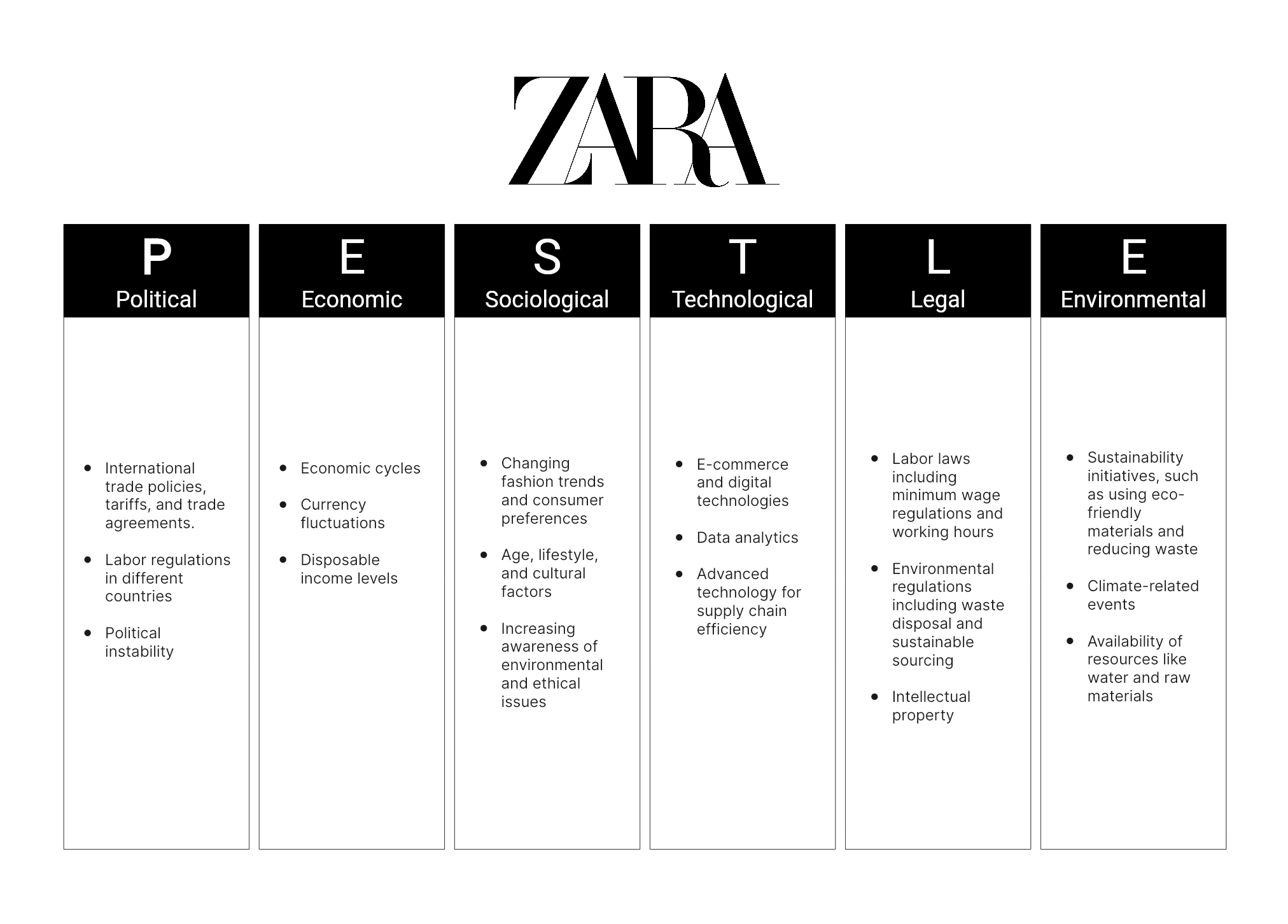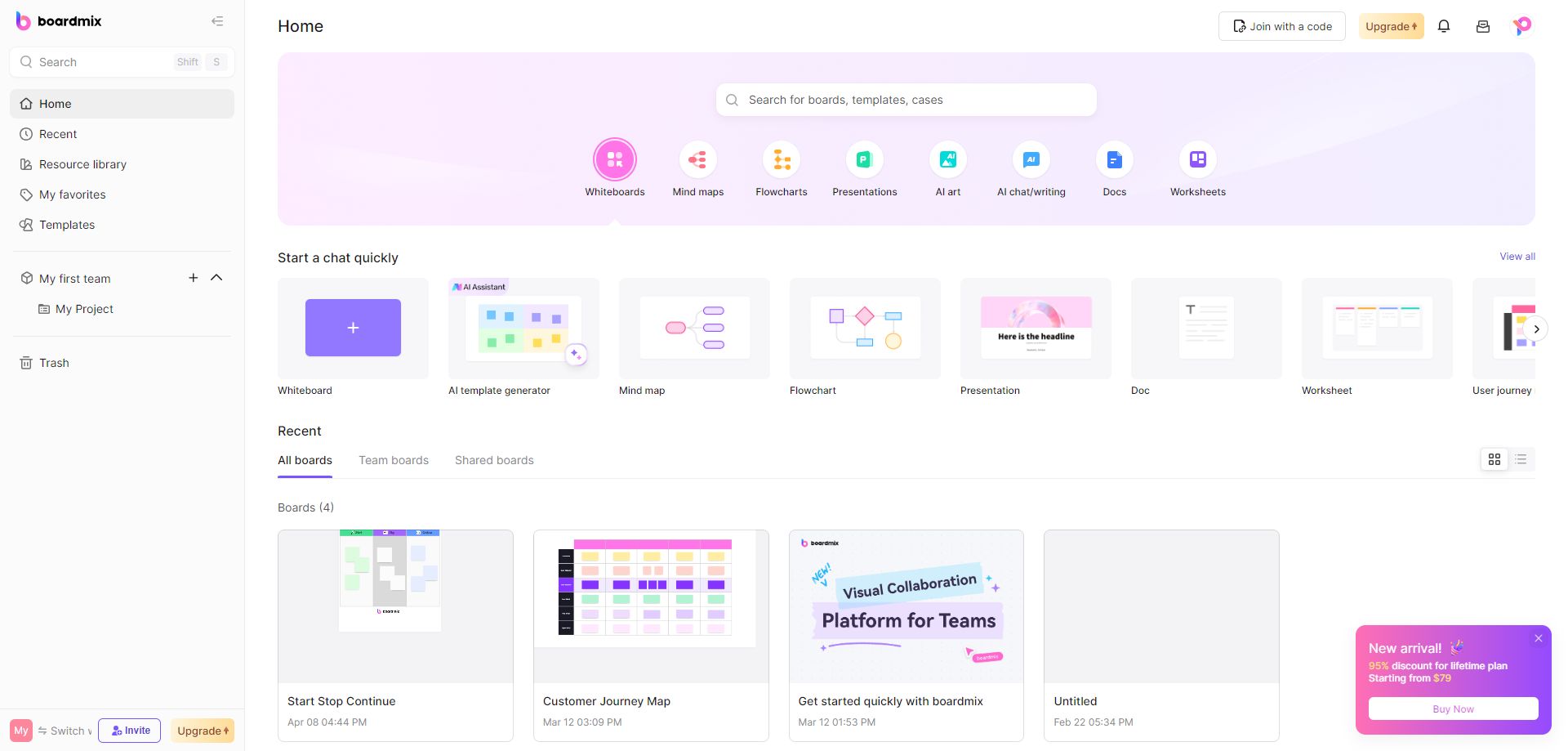In the dynamic world of fashion retail, understanding the external factors that influence a company's performance is crucial. This article delves into the Zara PESTLE analysis, a renowned fashion brand, to shed light on the macro-environmental factors affecting its operations. We'll explore the Political, Economic, Social, Technological, Legal, and Environmental aspects that impact Zara's strategic decisions.

What Is the PESTLE Analysis
PESTLE analysis, also known as PESTEL analysis, is a strategic analysis framework used by organizations to evaluate and understand the external macro-environmental factors that can impact their operations and decision-making. It provides a structured way to assess the political, economic, social, technological, legal, and environmental factors that influence a business or industry.
Organizations use PESTLE analysis as a tool for strategic planning, risk assessment, and decision-making. By analyzing these external factors, businesses can anticipate potential challenges and opportunities and adjust their strategies accordingly. PESTLE analysis helps in identifying both threats and opportunities in the external environment, allowing companies to adapt and thrive in a constantly changing business landscape.
Basic Info of Zara
Zara is a well-known international fashion retailer based in Spain. It is one of the flagship brands of Inditex, one of the world's largest fashion retail groups. Founded by Amancio Ortega and Rosalía Mera in 1974, Zara has become synonymous with fast fashion and a unique business model that sets it apart in the retail industry. Here is some basic information about Zara:

- Founding Year:Zara was founded in 1974 in La Coruña, Spain.
- Founder: Amancio Ortega, along with Rosalía Mera, played a key role in establishing the brand.
- Ownership: Zara is part of Inditex (Industria de Diseño Textil Sociedad Anónima), which is one of the world's largest fashion retailers. Inditex owns several other popular brands, including Massimo Dutti, Pull&Bear, Bershka, and more.
- Product Range: Zara offers a wide range of fashion items, including clothing, footwear, accessories, and cosmetics for men, women, and children. They cover various styles and trends, from casual wear to formal attire.
- Global Impact: Zara's innovative business model and ability to adapt to changing fashion trends have made it a prominent player in the global fashion industry. It has a significant influence on fashion retail practices worldwide.
Zara PESTLE Analysis
A Zara PESTLE analysis examines the external macro-environmental factors that can affect an organization. Let's analyze Zara's business environment using the PESTLE framework:

Political Factors
- Trade Policies: Zara operates globally and is affected by international trade policies, tariffs, and trade agreements. Changes in trade regulations can impact its supply chain and costs.
- Labor Laws: Labor regulations in different countries can affect Zara's workforce, working conditions, and labor costs.
- Political Stability: Political instability in regions where Zara operates can disrupt its supply chain and operations.
Economic Factors
- Economic Cycles: Zara's sales can be influenced by economic downturns and upturns. During economic recessions, consumers may cut back on discretionary spending.
- Exchange Rates: As a global retailer, currency fluctuations can affect Zara's profitability when converting revenues from different currencies.
- Consumer Income: Disposable income levels impact consumer spending on fashion. Economic disparities between regions can influence Zara's market strategy.
Social Factors
- Consumer Preferences: Zara's success depends on its ability to respond to changing fashion trends and consumer preferences quickly.
- Demographics: Age, lifestyle, and cultural factors influence fashion choices. Understanding these aspects helps Zara tailor its product offerings.
- Sustainability: Increasing awareness of environmental and ethical issues affects consumer choices. Zara's sustainability efforts are important in this context.
Technological Factors
- Digital Retail: The growth of e-commerce and digital technologies has transformed the retail industry. Zara must continue to invest in online channels and digital customer experiences.
- Data Analytics: Zara can use data analytics to better understand customer behavior and preferences, optimizing inventory and marketing strategies.
- Supply Chain Technology: Advanced technology can enhance Zara's supply chain efficiency and reduce lead times.
Legal Factors
- Labor Laws: Zara must comply with labor laws in different countries, including minimum wage regulations and working hours.
- Environmental Regulations: Environmental regulations impact Zara's operations, including waste disposal and sustainable sourcing.
- Intellectual Property: Protecting its designs and intellectual property is crucial in the fashion industry.
Environmental Factors
- Sustainability Practices: Zara's sustainability initiatives, such as using eco-friendly materials and reducing waste, align with growing consumer and regulatory expectations.
- Climate Change: Climate-related events can disrupt supply chains, affect production, and impact Zara's operations.
- Resource Scarcity: Availability of resources like water and raw materials can influence production costs and sourcing decisions.
Insights from the Zara PESTLE Analysis
The Zara PESTLE analysis yields several valuable insights. First, Zara's remarkable agility in adapting to fashion trends closely correlates with its responsiveness to evolving social factors. Second, the company's continued investments in technology and innovation are instrumental in maintaining its competitiveness within the fast fashion sector.
Furthermore, the stability of political and economic conditions in key markets holds paramount importance, as these factors directly influence the reliability of Zara's intricate supply chain. Lastly, Zara's unwavering commitment to legal compliance and sustainability initiatives emerges as not just a matter of ethical concern but as a strategic imperative for safeguarding its brand reputation and ensuring long-term success.
Key Takeaway: A One-stop Tool for PESTLE Analysis
Incorporating the PESTLE analysis framework into your strategic planning process is like having a versatile and comprehensive tool at your disposal. It enables you to systematically assess the political, economic, social, technological, legal, and environmental factors that impact your organization's operations.

To make the PESTLE analysis a easy-peasy task for you, you can use Boardmix, a one-stop whiteboard tool for various purposes. This tool features the real-time collaboration, rich templates and diagramming tools. You can utilize it no matter what you want to achieve.
Features of Making PESTLE Analysis on Boardmix
Boardmix's digital whiteboard provides an excellent platform for creating dynamic and engaging PESTLE analyses. PESTLE analysis - an acronym for Political, Economic, Social, Technological, Legal, and Environmental factors - is a strategic tool used to understand the macro-environmental factors that affect an organization. With its variety of features and intuitive interface, Boardmix is an ideal tool for this kind of strategic analysis. Here are some notable features that make Boardmix an effective platform for PESTLE analysis.
1. Interactive Whiteboard Interface
The interactive whiteboard is a powerful tool for visualizing your PESTLE analysis. You can draw, write, erase, and move elements freely on the board, allowing for dynamic interaction with your analysis.
2. Collaborative Tools
Boardmix allows multiple users to work together on a single whiteboard in real-time. This means you can collaborate with your team members on the same PESTLE analysis simultaneously, allowing for real-time brainstorming and discussion.
3. Multimedia Integration
With Boardmix, you can enrich your PESTLE analysis by integrating multimedia elements directly onto the whiteboard. These could include relevant news articles, video clips, data visualizations, and other resources that provide additional context and depth to your analysis.
4. AI-Assisted Idea Generation
One of Boardmix's standout features is its AI enhancement, which can suggest related concepts or ideas based on your input. This can be particularly useful in a PESTLE analysis to uncover hidden correlations or potential impacts that might not be immediately apparent.
5. Drag-and-Drop Functionality
Boardmix’s drag-and-drop feature allows you to easily arrange and re-arrange elements on your PESTLE analysis. This allows you to create logical groupings or highlight specific relationships between different factors in your analysis.
6. Templates and Pre-made Resources
Boardmix offers a variety of pre-made templates and resources that can expedite the creation of your PESTLE analysis. You can choose a template that best fits your needs and customize it as required.
7. Cloud Storage and Accessibility
Boardmix stores all your whiteboards securely in the cloud, ensuring you can access and continue your work from anywhere and at any time. Furthermore, as a web-based platform, Boardmix is compatible with a wide range of devices, making it a versatile tool for remote or distributed teams.

By leveraging these features, Boardmix offers an effective platform for conducting comprehensive PESTLE analyses. Whether you're brainstorming in real time with your team, integrating multimedia elements for deeper insights, or leveraging AI for idea generation, Boardmix's dynamic environment makes the strategic planning process more efficient and collaborative.To ease the task, you can take use of a one-stop tool called Boardmix. Just give it a try!










